Battle of the Wilderness

The Battle of the Wilderness were a series of battles in which the Union seemed to lose each battle, but as opposed to past times when it would withdraw, the Union army under Grant continued its relentless march South.
.
After his victory in Chattanooga, Grant was bestowed the rank of Lieutenant General, a rank held previously by only General's Washington and Scott. Grant became the Commander and Chief of all US Army Forces, with his headquarters in the field. General Halleck stepped down to become the Chief of Staff. With his new title, Grant became the defacto Commander of the Army of the Potomac. He kept Meade as the direct commander, but took field command of the army. It was Grant’s goal to attack boldly, and continue to attack until he brought the Confederacy to its knees.
Grant reorganized the army. He placed Phil Sheridan in command of the cavalry, which he detailed to act as an independent arm of the army. On May 4th, Grant’s army effected a crossing of the Rapidan. Again, the army crossed over and headed into the Wilderness. Grant's plan was to head across the Wilderness, and emerge two days later, in the open land beyond.
The first night of the campaign, the army camped in the Wilderness amongst the ghosts– some real and some imagined– of an earlier campaigns. The next morning the army moved out along three roads.
It was Grant’s hope that Lee would now fall back to Richmond. As an added incentive, General Banks was landing with 30,000 troops, at City Point, below Richmond and Petersburg, on the James. These troops posed a direct threat to those cities. Lee, however, had no plans for such a pullback. Instead, his forces began the 5th by moving down the road towards the Union forces coming up it. The first clash was on the Turnpike, where Ewell's Confederate troops clashed with Warren’s Union corps. Ewell’s forces pushed Warren’s troops back, after suffering heavy casualties. That was the nature of this second battle in the Wilderness. One side would advance, only to be repulsed, each side suffering heavily in heavy woods, that at time, caught fire.
The one successful flanking operation was launched by Longstreet's troops, after arriving late on the second day of the battle. Unfortunately for them, they ended up firing on each other. Similarly to Stonewall Jackson, who was shot by other Confederate forces in these very same woods a year earlier. A bullet hit Longstreet, who was wounded (but did survive). After two days of fighting, it was clear that nothing more than an expensive stalemate could be reached here in the woods of the Wilderness. Union casualties were high– 17,500 compared to 7,000 Confederate casualties. Any other Union commander would have concluded he was beaten and order a retreat. However, not Ulysses S. Grant. He had promised Lincoln that whatever happens, there will be no turning back, and he meant it. That night Grant broke into tears in the privacy of this tent. He quickly recovered, however, and later in the evening issued his orders.
All night the supply wagons were loaded and the troops pulled back from the lines. They were expecting another retreat. They began marching. When it became clear that instead of heading back across the Rapidan they were heading South, a cheer rose throughout the army. A veteran later remarked: “Our spirits rose, we marched free. The men begin to sing. That night we were happy. ” For the first time in the war, the Army of Potomac remained in the field after an initial battle.
Grant's goal was to reach the Spotsylvania Court House. Advance Union elements arrived there first, but withdrew when Confederate elements arrived. Lee's army soon arrived in force, and entrenched themselves. Grant decided to engage in a flanking maneuver, designed to get behind the Confederate lines. Hancock's division attempted a left flanking maneuver, but failed.
On May 10th, Grant ordered an attack on Lee's center. However, with the exception of a temporary breakthrough, which was not properly exploited, the attacks failed. On the 12th, Grant ordered another attack on the Confederate center. Initially it succeeded, driving back the Confederate defenders. Union forces captured most of the remaining members of the famed Stonewall division. However, Lee himself started to lead a reserve division in a counterattack. As the men yelled: “General Lee to the rear" they attacked, driving the Union forces back to the first Confederate defensive lines. There, a war of attrition developed. Union forces were on both flanks and in front. This was the Bloody Angle of Spotsylvania. Neither side broke. They just fought and fought. As one Union officer who survived wrote: "I never expect to be fully believed when I tell you what I saw of the horrors of Spotsylvania, because I am loathe to believe it myself were the case reversed".
Lee fell back a half a mile that night. Meanwhile, on the 11th, Lee suffered a much greater loss. Sheridan had begun a large scale raid towards Richmond, with 10,000 cavalryman. He was goading Jeb Stuart, the commander of the Confederate cavalry, to fight. Stuart accepted the challenge. The Union cavalry was both more numerous and better equipped than the Confederates. They bested the Confederate cavalry, and mortally wounded Stuart.
Grant tried to force Lee from Spotsylvania for another week, to no effect. He then decided to engage in another large scale flanking movement. This time, to the North Anna River. Lee planned to trap the Union army above the North Ana, not far from Hanover Junction. However, the Union troops did not oblige. When they caught the first site of the Confederate entrenchment, they started building their own.
Once again, Grant decided on a slide– this time toward Cold Harbor, the scene of another earlier battle. There, both armies were once again entrenched. Grant decided to make a direct assault on the Confederate works. Again, the rule had been true, in almost every battle of the war, was true again– Direct assault on heavily fortified positions were rarely successful. This was clearly the case this time. Grant's forces suffered 7,000 losses on the June 3rd, in the attack at Cold Harbor, (compared the much smaller 1,500 losses for the Confederates.) It was time for another slide, this time across the James River and to Petersburg. Union engineers quickly built a half mile pontoon bridge across the James and Grant’s forces were on their way to Petersburg. They arrived in Petersburg ahead of Lee, who for once was successfully kept in the dark as to Union plans. However, General Beauregard charged with the Confederate defenses of Petersburg and successfully held off a much larger Union force, until Lee's army could arrive, thus setting the stage for the siege of Petersburg.
| Battle of Yellow Tavern | Longstreets Account |
| Sheridan Joins the Army | Grant on Wilderness |
| Notes on Cold Harbor | Grant on Spotsylvania |
| Grant on North Ana | Grant on Cold Harbor |

Battlefield of the "Wilderness". Views on the battlefield of morning of May 12th, 1864. Scene of capture of Bushrod Rust Johnson Johnson's Division, C.S.A.
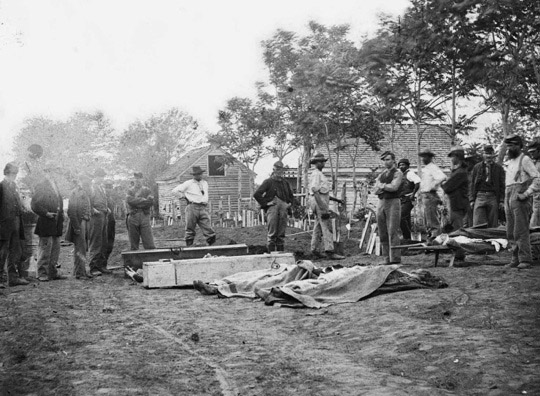
Fredericksburg, Va. Burial of Union soldiers May 19, 1864

Fredericksburg, Va. Soldiers filling canteens May 1864
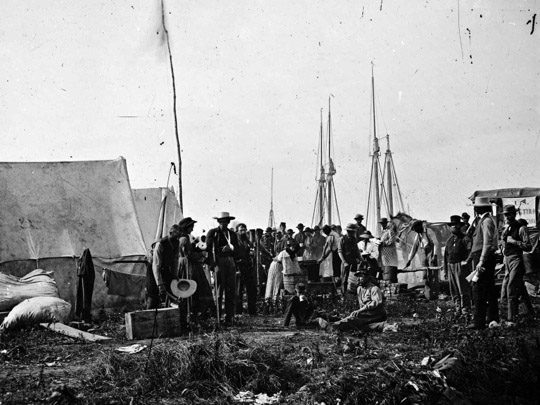
White House Landing, Va. Headquarters of the U.S. Christian Commission June 30 1864

From Harpers Weekly June 4, 1864 captioned General Wright Corps Running in 1200
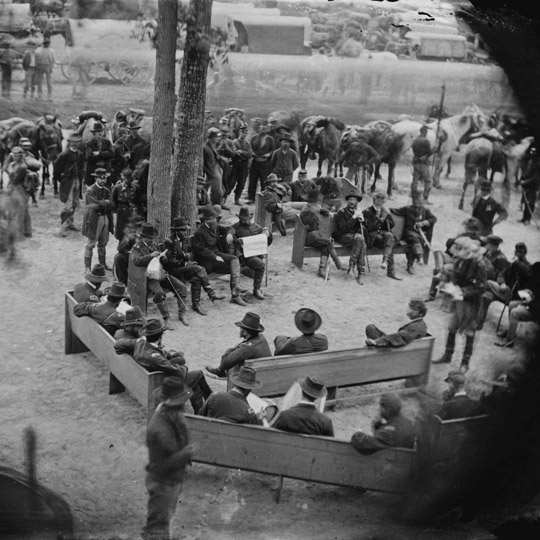
Massaponax Church, Va. "Council of War": Gen. Ulysses S. Grant, Gen. George G. Meade, Assistant Secretary of War Charles A. Dana, and numerous staff officers. Photographed by Timothy Sullivan May 24, 1864
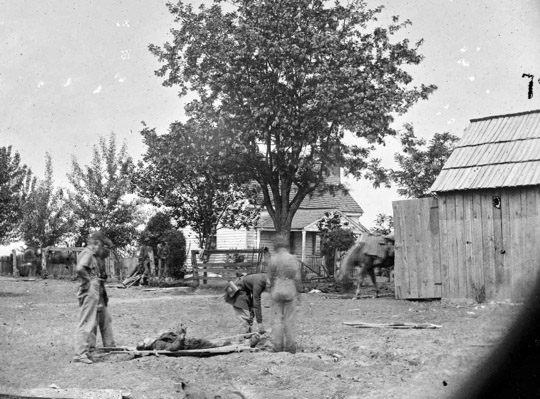
Spotsylvania Court House, Va., vicinity. Burial of soldier by Mrs. Alsop's house, near which Ewell's Corps attacked the Federal right on May 19, 1864
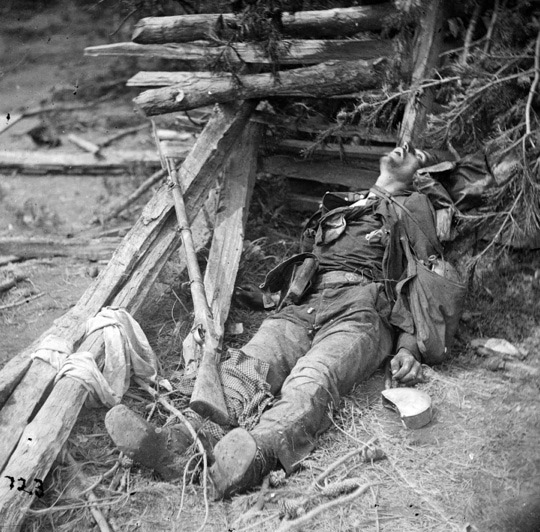
Spotsylvania Court House, Va., vicinity. Body of a Confederate soldier near Mrs. Alsop's house- Photographed by Timothy Sullivan May 24, 1864
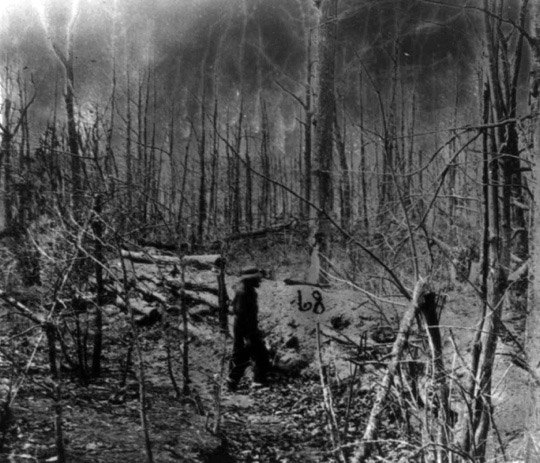
Battlefield of the "Wilderness": Confederate Entrenchments on Orange Plank Road
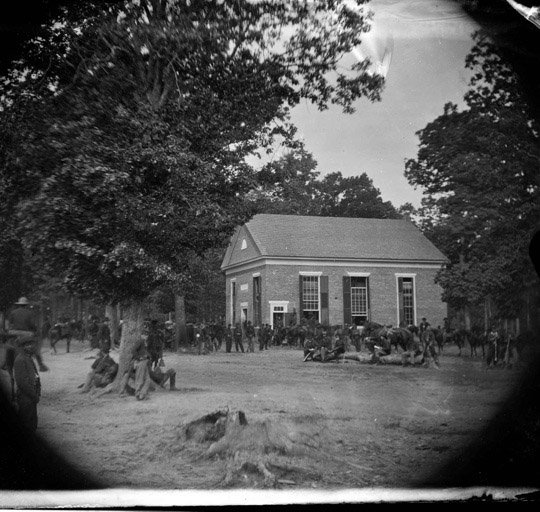
Massaponax Church, Va. View of the church, temporary headquarters of Gen. Ulysses S. Grant, surrounded by soldiers
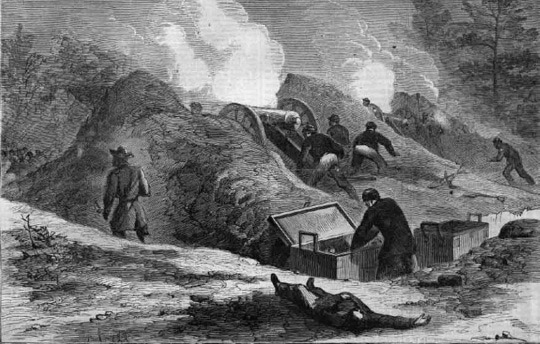
From Harpers Weekly June 25, 1864 captioned:Grant's Great Campaign—the New York Fourteenth Heavy Artillery Crossing Chesterfield Bridge, On The North Anna, Under A Heavy Fire. From A Sketch By A. R. Waud.

From Harpers Weekly June 18, 1864 captioned On to Richmond by Thomas Nast -

This painting depicts Lt. General Ulysses S. Grant on the field during the Battle of Wilderness, May 5-7, 1864, from the US Army
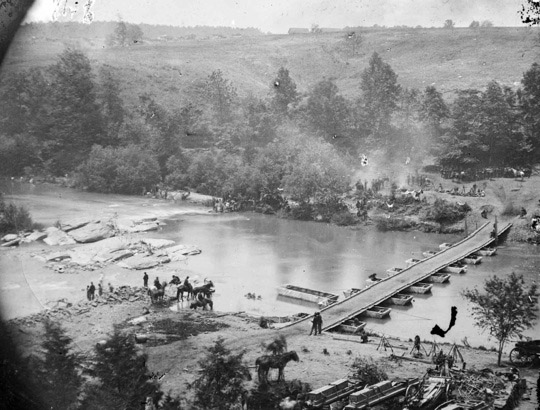
Jericho Mills, Va. Canvas pontoon bridge across the North Anna, constructed by the 50th New York Engineers; the 5th Corps under Gen. Gouverneur K. Warren crossed here on the 23d. View from the north bank
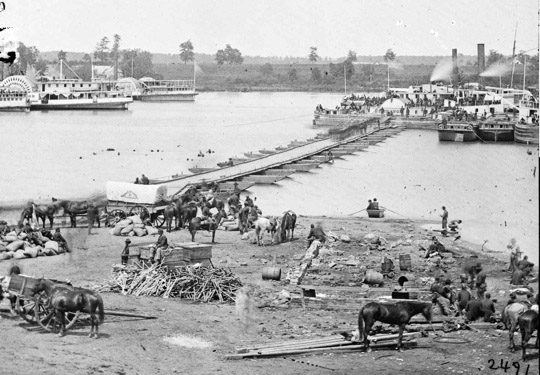
Port Royal, Va. The Rappahannock River front during the evacuation. Timothy O'Sullivan May 30, 1864
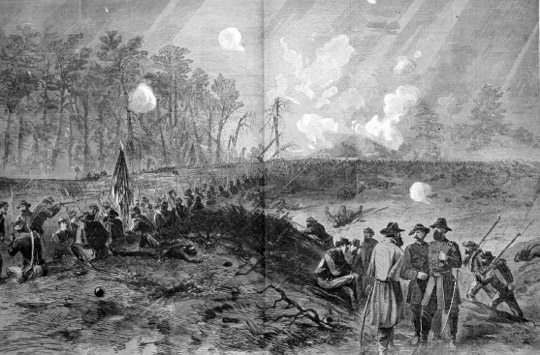
Fair Oaks, Va., vicinity. Capt. Rufus D. Pettit's Battery B, 1st New York Light Artillery, in Fort Richardson.
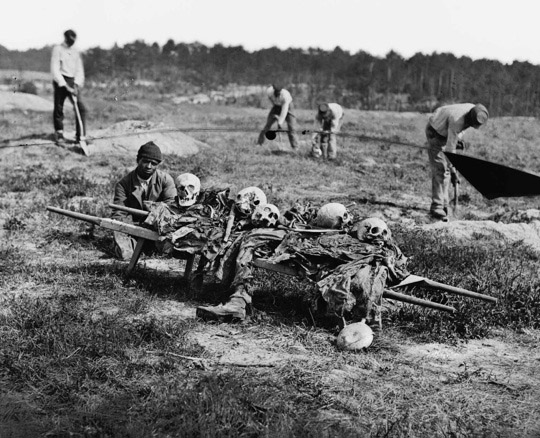
Skeltons of Confederate Soldiers-April 1865 Cold Harbor, Va. collecting bones of soldiers killed in the battle

Wadsworth Fighting in the Wilderness From Harpers Weekly June 4, 1864

Belle Plain, Va. Wagons of the Sanitary Commission and a crowd at the landing
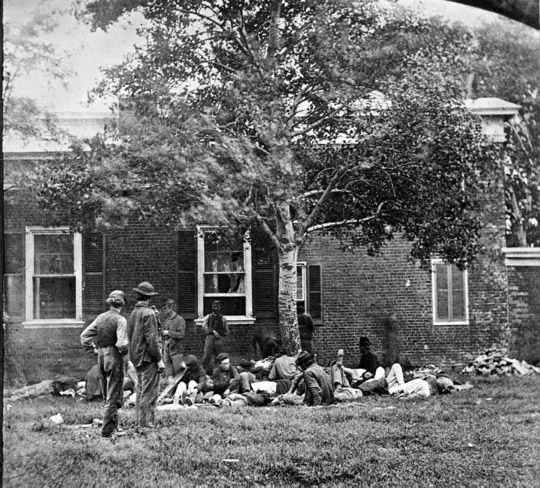
Fredericksburg, Va. Wounded from the Battle of the Wilderness, James Gardner photographer.

 >
>